Related Research Articles
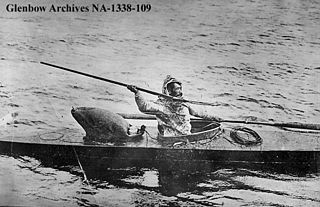
A harpoon is a long spear-like projectile used in fishing, whaling, sealing, and other hunting to shoot, kill, and capture large fish or marine mammals such as seals, sea cows and whales. It impales the target and secures it with barb or toggling claws, allowing the fishermen or hunters to use an attached rope or chain to pull and retrieve the animal. A harpoon can also be used as a ranged weapon against other watercraft in naval warfare.

Svend Foyn was a Norwegian whaling, shipping magnate and philanthropist. He pioneered revolutionary methods for hunting and processing whales. Svend Foyn introduced the modern harpoon cannon and brought whaling into a modern age. He is also recognized as a pioneer who introduced sealing to Vestfold County.
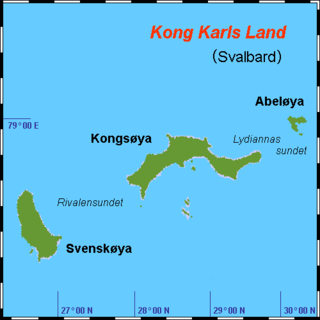
Kong Karls Land or King Charles Land is an island group in the Svalbard archipelago, in the Arctic Ocean. The island group covers an area of 342 km2 (132 sq mi) and is made up of the islands of Kongsøya, Svenskøya, Abel Island, Helgoland Island, and Tirpitzøya.

Henrik Johan Bull was a Norwegian businessman and whaler. Henry Bull was one of the pioneers in the exploration of Antarctica.
Whaling in Norway involves hunting of minke whales for use as animal and human food in Norway and for export to Japan. Whale hunting has been a part of Norwegian coastal culture for centuries, and commercial operations targeting the minke whale have occurred since the early 20th century. Some still continue the practice in the modern day, within annual quotas.
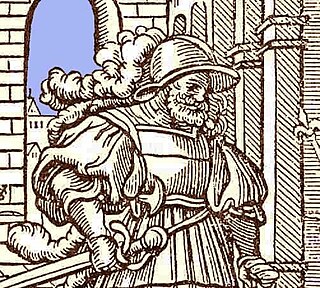
Jens Eriksen Munk was a Danish-Norwegian navigator and explorer. He entered into the service of King Christian IV of Denmark-Norway and is most noted for his attempts to find the Northwest Passage.

Kongsøya is an island in Svalbard, Norway. It is the largest of the islands in King Charles Land. Its area is 191 square kilometres (74 sq mi). The other main island in the chain is Svenskøya.
Events in the year 1975 in Norway.
Events in the year 1968 in Norway.
Events in the year 1809 in Norway.
Events in the year 1820 in Norway.
Events in the year 1839 in Norway.
Karin Bang was a Norwegian poet, novelist, children's writer and crime fiction writer.
Alf Reidar Jacobsen is a Norwegian journalist, non-fiction writer, novelist, crime fiction writer and biographer.
Anton Barth von der Lippe was a Norwegian whaler.

Antarctic was a Swedish steamship built in Drammen, Norway, in 1871. She was used on several research expeditions to the Arctic region and to Antarctica from 1893 to 1903. In 1895 the first confirmed landing on the mainland of Antarctica was made from this ship.
Svend Foyn Bruun Sr. was a Norwegian naval officer, ship-owner and whaler, and politician for the Conservative Party. He ran the company Bruun & von der Lippe from 1919 to 1945, co-founded Kosmos and was a four-term member of the Parliament of Norway.
Erik Eriksenstretet is a strait in the Svalbard archipelago, separating Kong Karls Land from Nordaustlandet. It is named after skipper and seal hunter Erik Eriksen, who reportedly discovered Kong Karls Land in 1853, and was the first to enter the islands six years later.
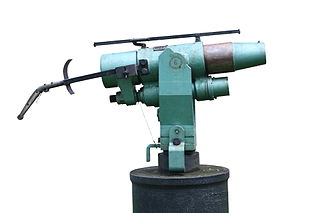
A harpoon cannon is a whaling implement developed in the late 19th century and most used in the 20th century. It would be mounted on the bow of a whale catcher, where it could be easily aimed with a wide field of view at the target. Powered by black powder and later, smokeless powder, it would generally fire a large steel harpoon, either solid steel or fitted with an exploding black powder, or later, penthrite (PETN) grenade.
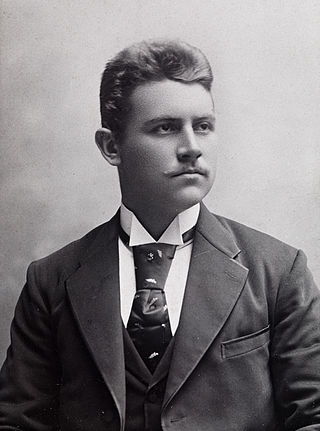
Eivind Astrup was a Norwegian explorer and writer. Astrup participated in Robert Peary's expedition to Greenland in 1891–92 and mapped northern Greenland. In the follow-up Greenland expedition by Peary during 1893–94 he explored and mapped Melville Bay on the north-west coast of Greenland. Among his works is Blandt Nordpolens Naboer from 1895. He was awarded the Knight of the Order of St. Olav in 1892.
References
- ↑ "Erik Eriksen 1820 – 1888". Norsk Polar Historie. Retrieved August 10, 2015.
- ↑ Hoel, Adolf (July 1935). "The Discovery of King Karl Land, Spitsbergen". The Geographical Review. XXV (3). New York: American Geographical Society: 476–478. doi:10.2307/209316. JSTOR 209316.
- ↑ "Erik Eriksenstretet (Svalbard)". Norwegian Polar Institute . Retrieved 15 July 2013.
- ↑ Jan Erik Ringstad (2014-09-29). "Erik Eriksen, Ishavsskipper". Norsk biografisk leksikon. Retrieved August 10, 2015.
- ↑ Susan Barr (2017-02-24). "Erik Eriksen – norsk ishavsskipper". Store norske leksikon. Retrieved January 1, 2018.